World class cities are like good friends, it doesn’t matter how long it has been since you last met, there is an instant familiarity. Also, just like really good friends they are constantly changing and revealing traits you had never expected. On my recent visit to Washington I discovered the amazing Brutalist Architecture DC.
The capital of the United States is clearly a world class city. One I first discovered three decades ago but had not visited since before Covid.
I was here for a wedding in neighbouring Virginia so had only 24 hours in which to explore DC.
Naturally I gravitated to the Mall. For those of you unfamiliar with Washington DC, this is the part of the capital you have seen before in hundreds of movies, news flashes or political dramas. Whether it is the Capitol Building, the Lincoln Memorial or the vast expanse of green between, this is something you have subliminally absorbed as a sign of America’s global domination.
National Building Museum
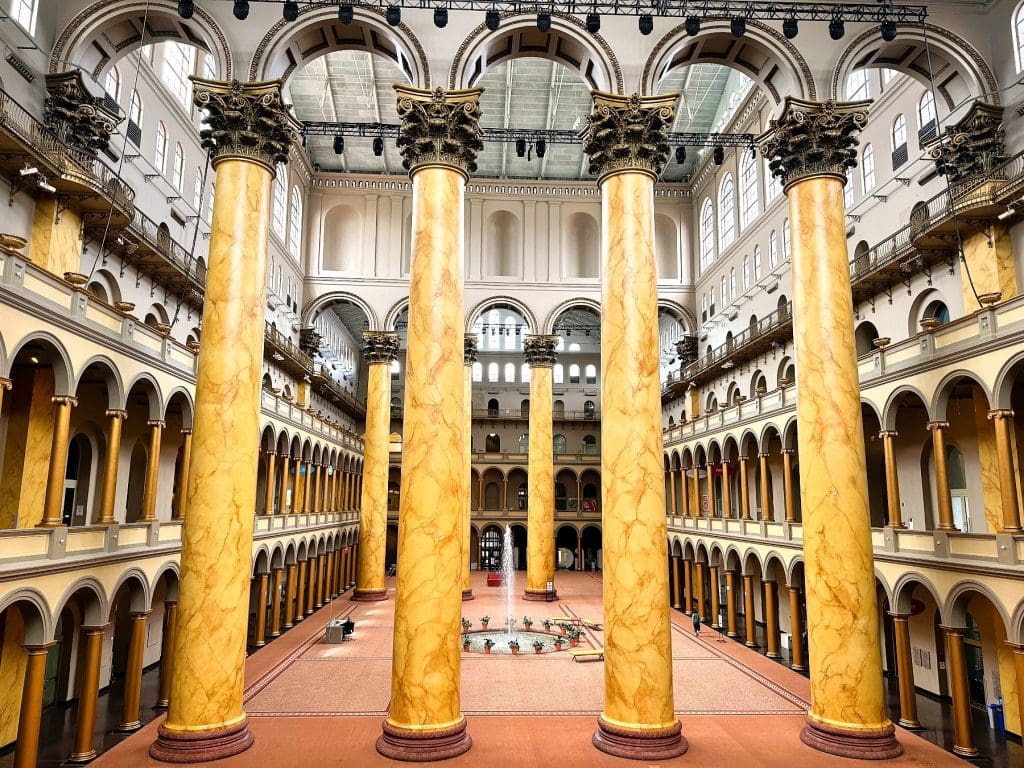
However, for my visit the National Mall was merely a backdrop to the action that awaited me. First, I stopped off at the National Building Museum, which is just a few blocks away from the Mall.
I wanted to check out two exhibitions, one of which was on the architect Frank Lloyd Wright, arguably America’s finest, and the second a new exhibition on Brutalist architecture in Washington DC.
While the first exhibition slightly disappointed – it spanned a small period in the architect’s life and the video was not working – the second transfixed me.
Modern Brutalist Architecture
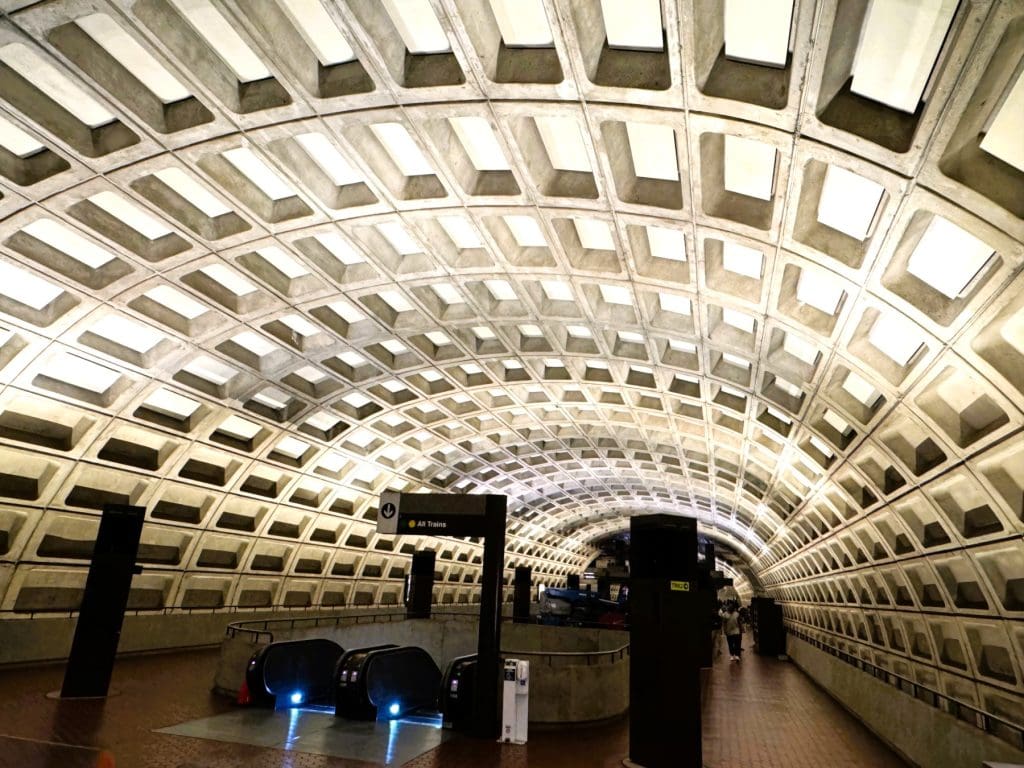
While many people regard Brutalism as an architectural form that started in the fifties, particularly in the UK, the exhibition suggests you can trace the approach to earlier modernist architects such as Le Corbusier and even back to the Bauhaus movement of Gropius which commenced in Weimar, Germany in 1919.
Brutalist Architecture Definition
Brutalism is derived from ‘béton brut’ or raw concrete, a phrase coined by Brit Reyner Banham in 1955. However, the term ‘new brutalism’ first coined by Alison and Peter Smithson refers to the Swedish nybrutalism.
Brutalist architecture characteristics consist of low cost, utilitarian housing with a socialist dimension. The latter is something that may resonate with the work of Gropius and Bauhaus, but is not something you might associate with the capital of capitalism. I was to discover later on in my travels through America, that Gropius was heavily influenced by the grain elevators of Buffalo and especially the use of concrete in their silos.
Brutalist Architecture DC
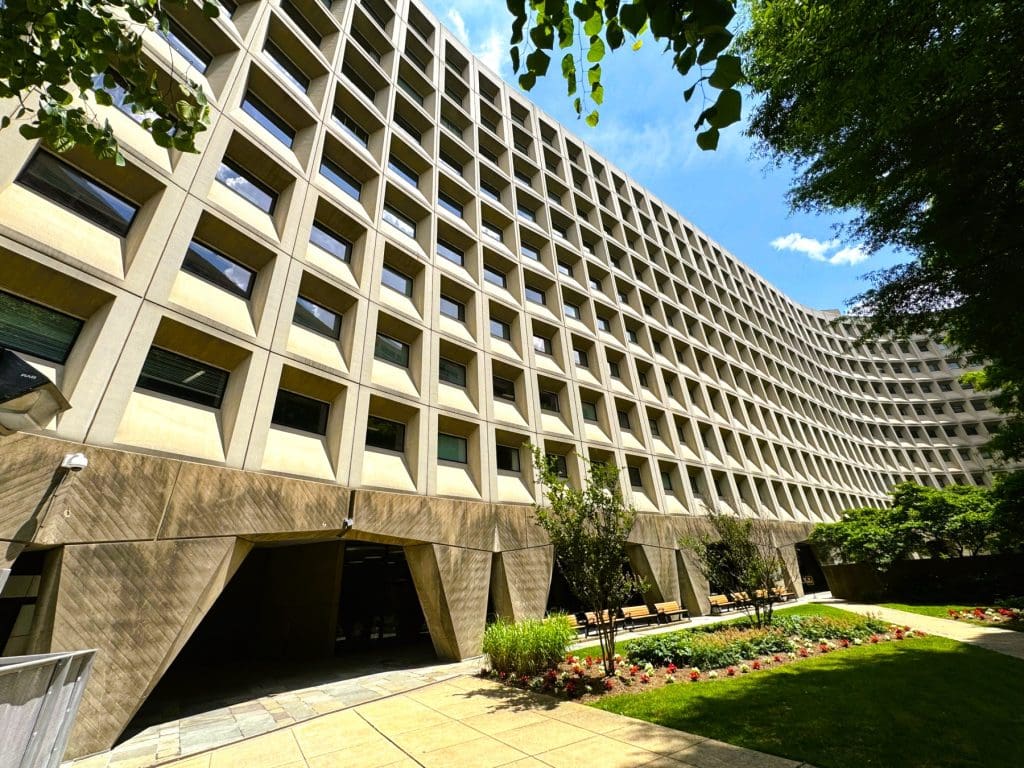
As the exhibition demonstrates, the US capital is full of Brutalist architecture. Interestingly, much of it is very close to the National Mall.
Some of most famous Brutalist architecture in Washington DC are the FBI Headquarters, L’Enfant Plaza (main image) and The Weaver Building, all of which are walkable from the National Mall.
Visiting these wonderful testaments to the raw power of architectural form, I was left as amazed as I was alone – Brutalism does not feature on to many DC city tours I suspect. The central question seems to be what should we do with these buildings? The FBI Headquarters is currently undergoing an extensive modernisation, not aided by the nature of concrete which does not lead itself to adaptation.
Brutalist Architecture DC: Hirshhorn Museum
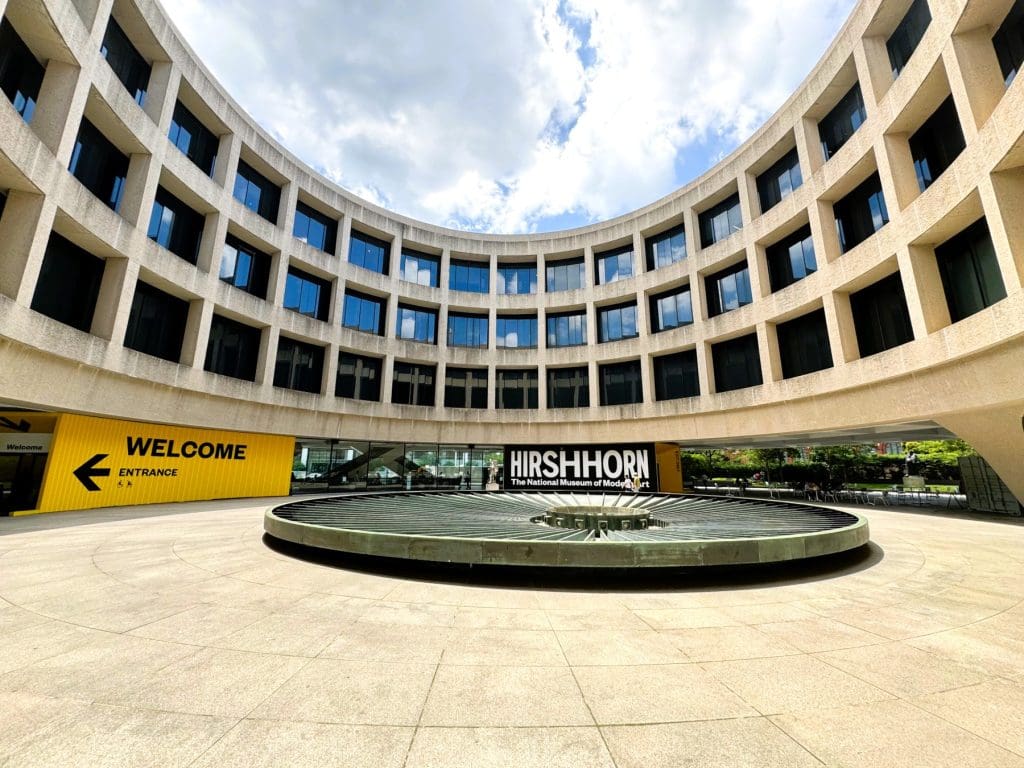
Another classic example of Brutalist architecture buildings in Washington DC is the Hirshhorn Museum, part of the Smithsonian Institution, and a leading voice in the contemporary art scene in the US capital.
As is often the case with contemporary art, the building is as impressive as the exhibits. The museum is circular. I walked around its Revolutions exhibition without realising I had just completed a full circle, until I emerged the other side facing the entrance I had passed through an hour or so earlier.
For me, although the exhibition contained an interesting collection of contemporary art, including some Picassos and Bacon, the best works were the amazing sculptures outside, in which Moore, Hepworth and Rodin stand out. Particularly on a bright sunny day, I recommend you sit outside, enjoy the sculptures and building, and the wonderful DC weather. Having said that, the exhibition by Mark Bradford in which he shreds a mural of the Battle of Gettysburg was most interesting.
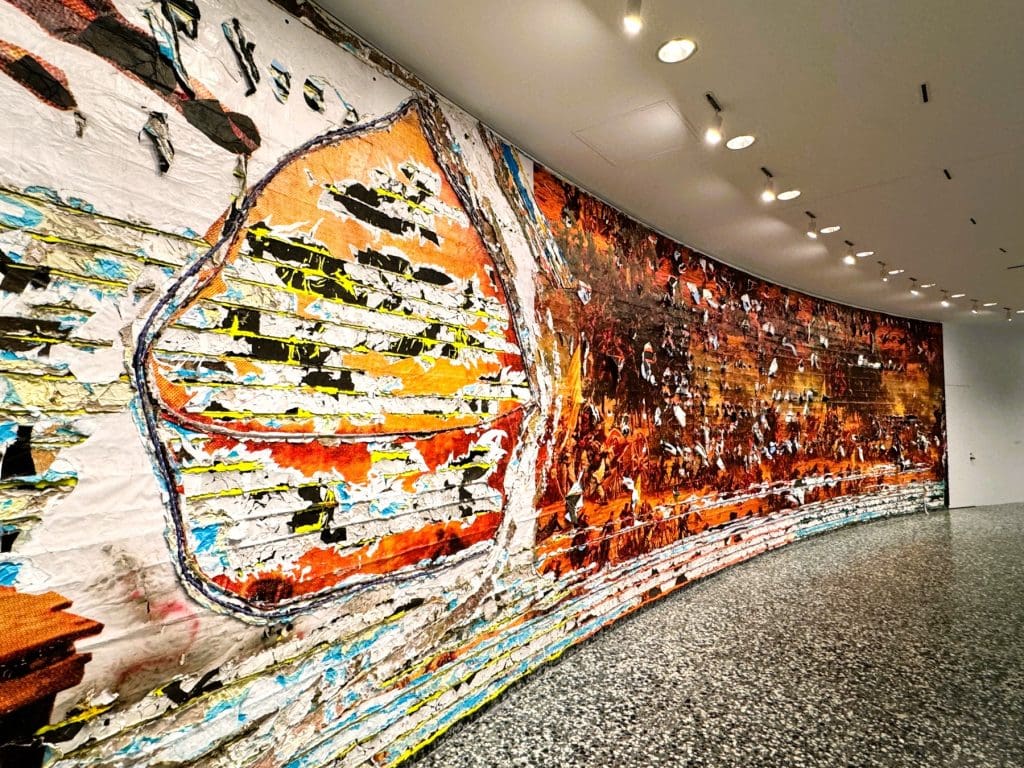
Mark Bradford shredding the Battle of Gettysburg
Navy Yard
One of my passions is to experience how industrial spaces have been reimagined. The Navy Yard is a fine example of this. The area used to be a shipyard. Now, it has been converted into a post industrial space dominated by shops, cafés, restaurants and bars, while the Dockside area has been converted into a pleasant riverside walking and biking park with wilding initiatives.
Bluejacket Brewery is located in a 1919 industrial building. The craft brewery produces its own range of excellent beers – how the American brewing scene has developed since my first visit to the capital when Rolling Rock was the best of a bad lot.
Nearby, the Atlas Brew Works has the only solar-powered craft brewery in DC. As the sun starts to relent, I head for the Salt Line, which has adopted a Dock to Dish programme whereby the owners pay their supplies up front to cover their costs over the season. The restaurant then receives a dealers’ choice of fish, which will include less common fish, aiding the sustainability of the industry that has come into question in recent years.
I am afraid that my choice of some Maryland oysters and Bluefin tuna crudo did little to support the sustainability of fish supplies, but sitting in the last of the sun beside the Anacostia river it was a wonderful experience. I particularly liked the crunchy quicos in the excellent crudo. It made me feel as if I were back in the Caribbean, having just visited Saint Lucia.
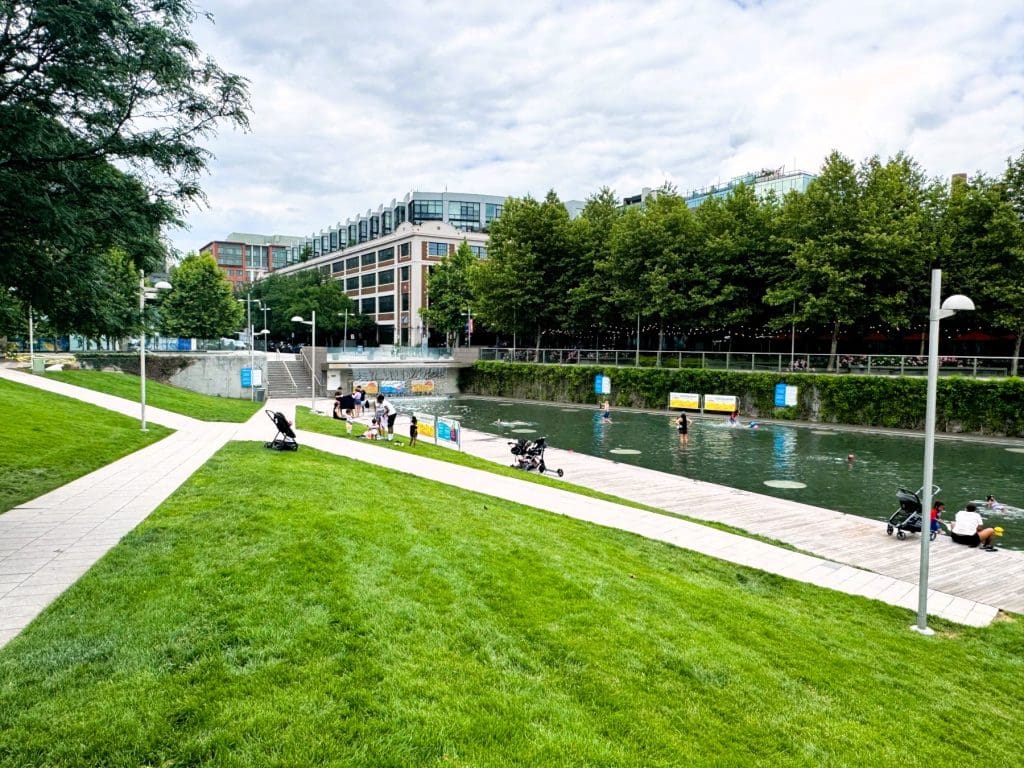
Arlington Crab Shack
My evening concluded across the river in neighbouring Virginia, where I indulged in a really authentic local experience with my newly married DC friends.
The Quarterdeck is just across the road from the Arlington cemetery and it serves the most amazing crabs – by the dozen.
If you don’t like your meals messy then this is not the place for you. But if you want to dig your teeth into the most amazing meaty crab then make a beeline for The Quarterdeck. Just make sure you are not wearing a white shirt! There are less messy options for the more fastidious eaters, but really that would be missing out on the fun.
This was an amazing experience with lots of people from the local community eating here. I don’t think there was another tourist outside of our group. It was a wonderful conclusion to a day in DC, a city that continues to deliver regardless of how many times you revisit it.
Things To Do in DC
For more inspiration on what to do in Washington DC, go to https://washington.org/